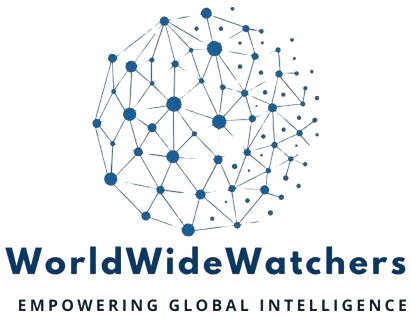
Regional Focus
-
Insight [G, Confidence: High]: The ongoing tensions between the U.S. and Iran, exacerbated by military actions and rhetoric, highlight a persistent geopolitical risk with potential for escalation, particularly in the context of nuclear enrichment disputes.
Credibility: The sources are established media outlets with a history of covering international relations.
Coherence: The narrative is consistent with historical U.S.-Iran tensions and recent military developments.
Confidence: High, given the corroboration from multiple sources and historical context. -
Insight [S, Confidence: Moderate]: The Houthis’ declaration to target ships linked to Israeli ports signals a heightened security threat in the Red Sea, potentially disrupting maritime trade and escalating regional conflicts.
Credibility: The source is known for its regional focus, though it may have biases.
Coherence: The insight aligns with ongoing regional hostilities and previous Houthi actions.
Confidence: Moderate, due to potential biases in reporting. -
Insight [R, Confidence: High]: NATO’s response to Russian drone and missile strikes on Ukraine underscores the strategic disruption caused by ongoing conflicts in Eastern Europe, with implications for NATO’s operational readiness and geopolitical stability.
Credibility: The source is a reputable international news outlet.
Coherence: The information fits within the broader context of NATO’s involvement in Eastern Europe.
Confidence: High, supported by consistent reporting from credible sources.
Sentiment Overview
The sentiment across the regional focus articles is predominantly negative, reflecting heightened tensions and conflict escalation.
Policy Relevance
Governments should consider diplomatic engagement and conflict de-escalation strategies, while enhancing regional security cooperation to mitigate risks.
Counter-Terrorism
-
Insight [G, Confidence: Moderate]: The disbanding of the PKK and Turkey’s subsequent political maneuvers suggest a strategic shift in Turkey’s internal security dynamics, potentially affecting regional stability and Kurdish political movements.
Credibility: The source provides a detailed analysis but may have regional biases.
Coherence: The insight aligns with Turkey’s historical approach to Kurdish issues.
Confidence: Moderate, due to potential biases and evolving political contexts. -
Insight [S, Confidence: Low]: The portrayal of Hezbollah in media coverage reflects ongoing biases and challenges in reporting on Middle Eastern conflicts, impacting public perception and policy discourse.
Credibility: The source highlights potential biases in media reporting.
Coherence: The insight is consistent with known media biases but lacks direct evidence.
Confidence: Low, due to reliance on subjective analysis.
Sentiment Overview
The sentiment is mixed, with elements of both negative and neutral tones, reflecting complex political and media dynamics.
Policy Relevance
Policymakers should focus on media literacy and balanced reporting to ensure informed public discourse and effective counter-terrorism strategies.
Cybersecurity
-
Insight [S, Confidence: High]: The activities of the China-linked Fire Ant group exploiting VMware vulnerabilities highlight significant cybersecurity threats to critical infrastructure, necessitating enhanced defensive measures and international cooperation.
Credibility: The source is a specialized cybersecurity publication with a strong reputation.
Coherence: The insight is consistent with known patterns of cyber threats from state-linked actors.
Confidence: High, based on detailed technical analysis and historical patterns. -
Insight [R, Confidence: Moderate]: The push for AI integration in Chinese universities suggests a strategic disruption in educational paradigms, potentially positioning China as a leader in AI innovation and application.
Credibility: The source is a reputable technology review publication.
Coherence: The insight aligns with China’s broader technological ambitions.
Confidence: Moderate, due to the evolving nature of AI policies.
Sentiment Overview
The sentiment is generally neutral, with a focus on technological advancement and strategic implications.
Policy Relevance
Governments should prioritize cybersecurity resilience and consider the implications of AI integration in education and industry.
National Security Threats
-
Insight [G, Confidence: High]: The ongoing humanitarian crisis in Gaza, exacerbated by limited aid and blockades, poses a significant national security threat, with potential for regional destabilization and international condemnation.
Credibility: The source is a global security-focused publication.
Coherence: The insight is consistent with ongoing humanitarian reports and international reactions.
Confidence: High, based on corroborated reports and historical context. -
Insight [S, Confidence: Moderate]: Protests against arms exports to Israel reflect growing public dissent and potential security challenges for companies involved in defense manufacturing, highlighting the intersection of public opinion and national security.
Credibility: The source is a reputable news outlet with a focus on national issues.
Coherence: The insight fits within broader trends of public activism and defense industry scrutiny.
Confidence: Moderate, due to potential biases in protest reporting.
Sentiment Overview
The sentiment is predominantly negative, with high tension and public dissent regarding national security policies.
Policy Relevance
Governments should address humanitarian concerns and engage in transparent dialogue with the public to mitigate security risks and enhance policy legitimacy.
ℹ️ Legend – Analytic Tags & Confidence Levels
- [G] Geopolitical Risk: International power shifts, diplomatic tension, or alliance impact.
- [S] Security/Intelligence Signal: Operational or tactical insight for defense, police, or intel agencies.
- [R] Strategic Disruption: Systemic instability in digital, economic, or governance structures.
Confidence Levels Explained
- High: Strong corroboration and high reliability.
- Moderate: Some verification; potential ambiguity.
- Low: Limited sources, weak signals, or early-stage indications.

